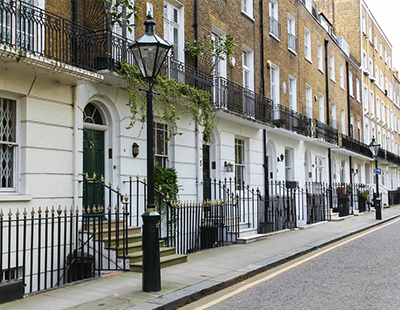The desire for more living space, a key feature of the pandemic, has driven up rents on larger properties faster than on smaller homes.
As a result, the cost of trading up to gain an extra bedroom has substantially increased - good news for agents with stock including larger properties.
Data from the agency Hamptons shows that in October, four-bedroom properties recorded the strongest rental growth.
The average rent on a four-bed home in Britain rose to £1,949 pcm, up 10.6 per cent on the same time last year and nearly triple the rate of growth of a one-bed which rose 3.7 per cent year-on-year to stand at £875 pcm.
The gap between the monthly rent of a one and two-bed home now stands at its widest point since Hamptons’ records began in 2013.
Strong rental growth has meant that the average one-bed in Britain now costs the same amount as a two-bed did in 2016.
This shows that the cost of trading up from a one-bed to a two-bed rental property has doubled over the last three years.
Last month it cost £144 or 16 per cent more to rent a two-bed home, more than double the gap (£68 or eight per cent) in October 2018. This equates to an extra £1,728 each year.
The cost of moving from a two-bed to a three-bed has also risen.
Last month a tenant would have had to pay an extra £142 or 14 per cent each month to trade up from a two to three-bed home, £30 more than in October 2020. This will cost the average tenant an extra £1,705 each year.
The average two-bed home now costs the same amount to rent each month as a three-bed did in 2018.
Unsurprisingly London is the costliest region in the country to trade up, both in absolute and percentage terms.
Last month the average two-bed in the capital cost £567 or 42 per cent more each month than a one-bed. At the other end of the scale, the North East is the cheapest region to swap a one-bed for a two-bed (£102 or 20 per cent).
Compared to last year, the cost of trading up has risen the most in the East Midlands.
Here it cost 12 per cent or £63 more each month to trade a one-bed for a two-bed home than in October 2020. This is because rents on one-bed properties in the region have fallen by 0.2 per cent year-on-year, while two-bed rents have risen by 9.7 per cent.
London is the only region where it’s cheaper to trade up than it was last year. This is because rents on one-bed properties in the capital have risen faster than two-beds. Much of the demand for one-bed homes in London has been driven by younger tenants and pied-à-terre hunters returning to the capital, which in turn has bolstered rents.
Aneisha Beveridge, head of research at Hamptons, says: “While smaller city properties have fallen out of fashion, larger family homes have been in high demand. But with rents on larger homes currently rising at twice the rate of smaller properties, it is now more costly for tenants to trade up than ever before.
“The pandemic has marked the first time that we’ve seen such a big divergence in rental growth by property size. Usually, rental growth remains fairly uniform no matter how large the home is, but over the last year the gap between rental growth on smaller and larger properties has widened to around five per cent.
“But as more tenants make their return to city centres, many seeking smaller properties, it’s likely that the gap will begin to shrink in the new year.”














%20-%20IMAGE%20Client%20Accounting%20%E2%80%93%20what%20are%20your%20options.jpg)





Join the conversation
Be the first to comment (please use the comment box below)
Please login to comment